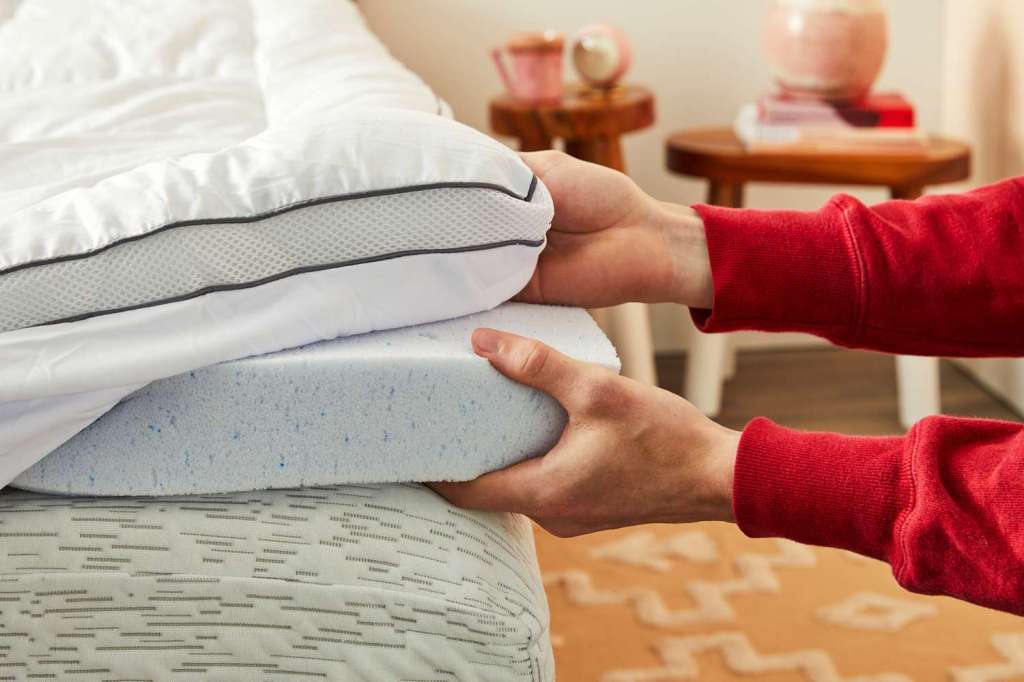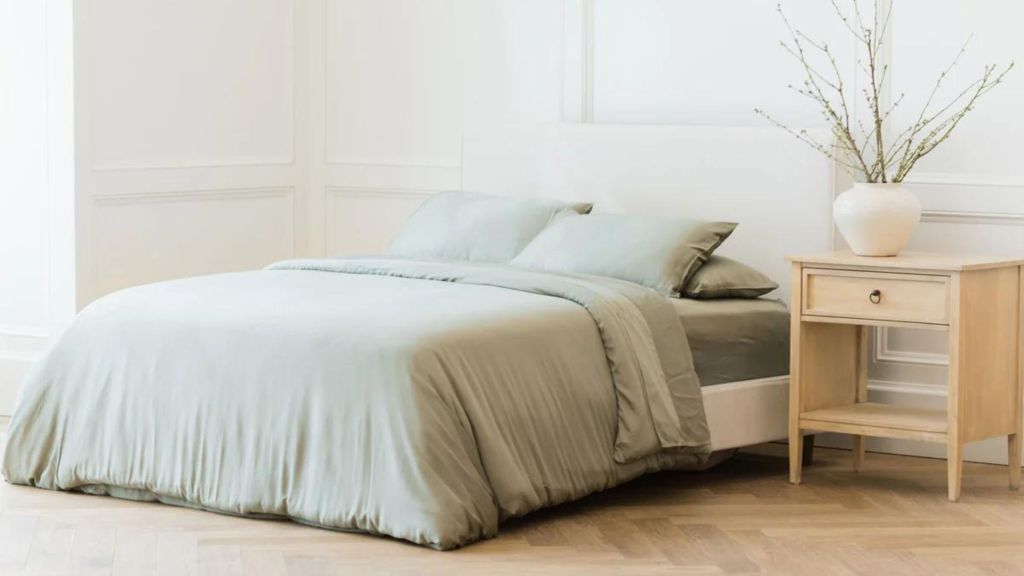Navigating the whirlwind of daily life often makes quality sleep seem like a distant dream. Juggling work, family, and a bustling schedule leaves minimal time for restful nights. The comforting truth is you’re not alone in this struggle. If sweet slumber feels out of reach, this guide is here to help. Creating a calming sleep environment marks the first step toward restful nights. By employing a few effective strategies, you can transform your sleep space into a serene haven, say goodbye to distractions and welcome soothing vibes. This guide is designed to lead you on this peaceful journey, promising a tranquil sleep sanctuary that allows you to unwind and embrace a well-deserved rest.
Use a Mattress Topper

Investing in a high-quality mattress topper is one guaranteed way to enhance your sleep experience. These toppers serve as an extra layer of comfort, offering added cushioning and support to your mattress. When shopping for a mattress topper protector, prioritise features that align with your needs, such as materials that suit your comfort preferences or specific sizes to fit your bed.
Look for mattress toppers crafted from premium materials that align with your comfort needs. Memory foam offers contouring support, ideal for alleviating pressure points and ensuring a more restful sleep. Latex toppers provide bounce and responsiveness, while gel-infused options offer cooling properties, perfect if you’re prone to overheating during sleep. Assess your comfort requirements to determine the material that best suits your sleeping style.
Moreover, prioritise allergen-resistant or hypoallergenic options if you suffer from allergies. Look for mattress toppers that feature materials designed to repel common allergens like dust mites and pet dander. This protective layer not only ensures a cleaner sleeping surface but also reduces the risk of allergic reactions that might disrupt your sleep.
You should also consider the breathability of the topper material. If you tend to sleep hot, opt for breathable fabrics or cooling gel-infused foam to regulate your sleep temperature. These features can prevent discomfort from overheating, promoting a more refreshing and uninterrupted night’s rest.
When evaluating mattress toppers, assess their durability and maintenance. Look for options with sturdy construction that can withstand wear and tear over time. Additionally, prioritise toppers that are easy to clean or have removable, machine-washable covers for hassle-free maintenance.
Selecting a mattress topper protector with features that align with your sleep needs can enhance your overall sleep quality. Whether it’s ensuring a cooler sleep surface, alleviating pressure points, or protecting against allergens, choosing the right mattress topper tailored to your preferences creates a more calming and comfortable sleep environment.
Select Supportive Pillows
Choosing the right pillows is key for quality sleep. Supportive pillows cater to individual sleep positions, ensuring proper alignment of the head, neck, and spine. For side sleepers, thicker pillows maintain spinal alignment, preventing strain. Back sleepers may benefit from medium firmness, supporting the natural curve of the neck. Stomach sleepers require softer, flatter pillows to avoid neck strain. Materials like memory foam or latex offer contouring support, reducing pressure points. Hypoallergenic options mitigate allergic reactions, promoting uninterrupted sleep. Selecting pillows tailored to your sleeping habits facilitates comfort, reduces discomfort, and fosters an optimal sleep posture, contributing significantly to restful sleep.
Opt for Breathable Bedding

Selecting breathable bedding is a game-changer for sleep quality. Look for fabrics like cotton or bamboo that allow airflow, wick away moisture, and regulate temperature. These materials create a cosy cocoon without trapping heat, keeping you comfortably cool throughout the night. This will also help you say goodbye to night sweats. Opting for lighter, natural fibres promotes a refreshing sleep experience. Additionally, consider layering with breathable covers to customise warmth. Embrace the luxury of breathable bedding, making bedtime a delightful retreat. With these airy fabrics, you’ll find yourself drifting into dreamland in ultimate comfort, ensuring a refreshing and uninterrupted night’s rest.
Darken the Room
Darkening your room is a simple yet powerful strategy for a serene sleep setting. Blocking out external light signals the body to produce melatonin, aiding in deeper sleep. Utilise blackout curtains or shades to keep streetlights and morning sun at bay, fostering an environment conducive to rest. Diminish distractions and enhance relaxation by minimising artificial light sources. Embrace the soothing embrace of darkness, allowing your body to unwind and transition naturally into a tranquil sleep state. With a darker room, you pave the way for deeper and more rejuvenating slumber.
Control the Temperature
Maintaining an optimal sleep temperature is vital for quality rest. To create a calming sleeping environment, aim for a cool room, around 15-20°C, adjusting according to personal comfort. Regulating room temperature signals the body to ease into sleep, enhancing sleep onset and continuity. In warmer weather, opt for cooler settings using breathable fabrics and perhaps a fan to stay comfortable. Conversely, during colder periods, snuggle up with insulating bedding and adjust the room temperature to slightly warmer. Be mindful of humidity too—use a dehumidifier in high humidity and a humidifier in drier climates. Experiment to find your ideal sleep temperature, ensuring a setting that promotes relaxation and undisturbed slumber, regardless of external conditions.
Minimise Noise Disruption
Minimising noise disruption is essential for an optimal sleep environment and undisturbed rest. External noise, whether it’s traffic, loud neighbours, or household sounds, disrupts sleep stages, causing sleep fragmentation. It’s frustrating and affects your mood, energy, and overall well-being. When you can’t control external noise, consider earplugs, white noise machines, or soundproofing your room. Implementing strategies such as heavy curtains, sealing gaps, using soft materials like carpets, installing acoustic panels, or rearranging furniture to act as sound barriers can significantly reduce unwanted noise infiltration. By taking control of your environment, you can create a haven that invites rejuvenation and ensures you get the sleep you need.
Limit Electronic Use

Cutting down on electronics before bed can be a game-changer for your sleep. Those screens emit blue light that messes with your sleep hormones, making it tough to doze off. Try a tech-free wind-down routine an hour before bedtime. Dive into a good book, enjoy a relaxing bath, or give meditation a shot. Lowering the lights and giving up screens sends a signal to your brain that it’s time to rest, helping you fall asleep more easily. Limiting electronic devices creates a cosy atmosphere for better sleep. Remember to embrace this pre-sleep ritual, and you’ll snooze like a champ, waking up refreshed and ready to conquer your day!
